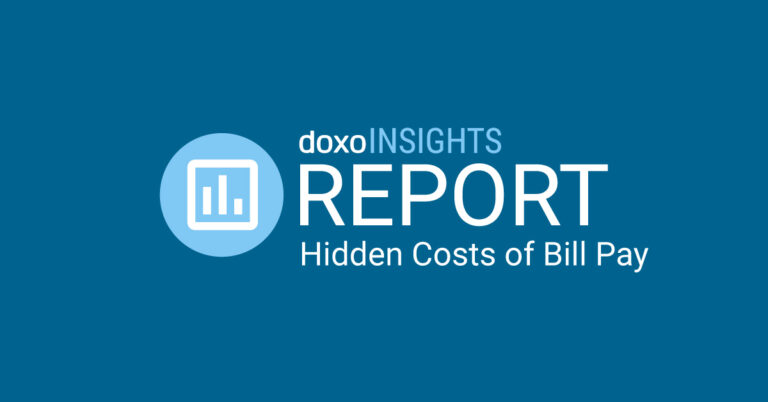The Hidden Costs of Bill Pay Report 2024

The 2024 Hidden Costs of Bill Pay Report uses doxoINSIGHTS data combined with additional market research to not only highlight the concerns American consumers have about issues like identity fraud, late fees, overdraft charges, and negative credit impacts, but also to quantify the expense each of these causes for the average U.S. household.
The average household spends $1,495 on the hidden costs of paying bills
These figures are 18% higher than they were for last year’s Hidden Costs of Bill Pay Report, which showed that the hidden costs of bill pay had an overall market impact of $167 billion, and an average annual cost per household of $1,268.
Mostly moderate increases contributed to this spike, with credit impacts seeing the biggest increase, which is not surprising given high rates across the board. Last year credit fees cost consumers an average of $945, as compared to $1,186 in this year’s report.
What is doxo’s Hidden Costs of Bill Pay Report?
A comprehensive analysis provided each year of the top four hidden costs of bill pay that affect consumers:
- Late fees and penalties
- Bank overdraft fees
- Identity fraud
- Detrimental credit impacts
Similar to last year, the report draws on a mixture of proprietary, unique, anonymized bill pay data and authoritative sources like the Federal Reserve, the Consumer Financial Protection Bureau, and the Federal Trade Commission (FTC).
Top hidden costs impacting American households in 2024:
- Boost in credit score could save you thousands
- Late fees cost the average household $173
- Non-sufficient funds and overdraft fees cost the average household $60
- 31% reported some type of identity or payment data theft event within the last year
Boost your credit score by 35 points and you could save $1,186
Staying current on bills and debt payments is a primary factor for strengthening credit. doxo’s analysis shows that staying ahead on payments and improving a credit score by 35 points can save the average household $1,186 per year in interest expense.
The average U.S. household carries over $100,000 in revolving debt – between mortgages, auto loans, and credit cards, primarily – so boosting credit and qualifying for lower interest rates significantly reduces expenses.
Late fees cost the average household $173
Missing or paying a bill late often incurs late fees, and 32% of households reported incurring one or more late fees.
This totaled $23 billion in household expenses, or $173 per household, as compared to a total of $20 billion, or $155 per household last year.
Overdraft fees have dwindled year-over-year, but still cost about $75 per household
Banks charged consumers over $10 billion in overdraft fees this year, or about $75 per household. This is compared to a total of $16 billion, with an average of $119 per household, last year. According to a number of reports, in general, overdraft fees are dwindling.
Identity fraud amounts to $10 billion is fees each year
The average household out of pocket costs for identity fraud amounts to $10 billion, or $76 per household a year, as compared to a total of $9 billion, or $67 dollars per household, last year.
These are just the direct costs, not including the time and expense consumers spend to restore and repair their identity records once compromised.
20% of the doxo user base reported some type of identity or payment data theft event, and 86% expressed concern about identity fraud impacting them. Not surprisingly, consumer anxiety about identity fraud risk is high, and media coverage of high-profile business data losses heightens awareness.
The Hidden Costs of Bill Pay 2024
A comprehensive analysis of the top four hidden costs of paying bills that affect consumers: late fees, overdraft fees, identity fraud, and detrimental credit impacts.
